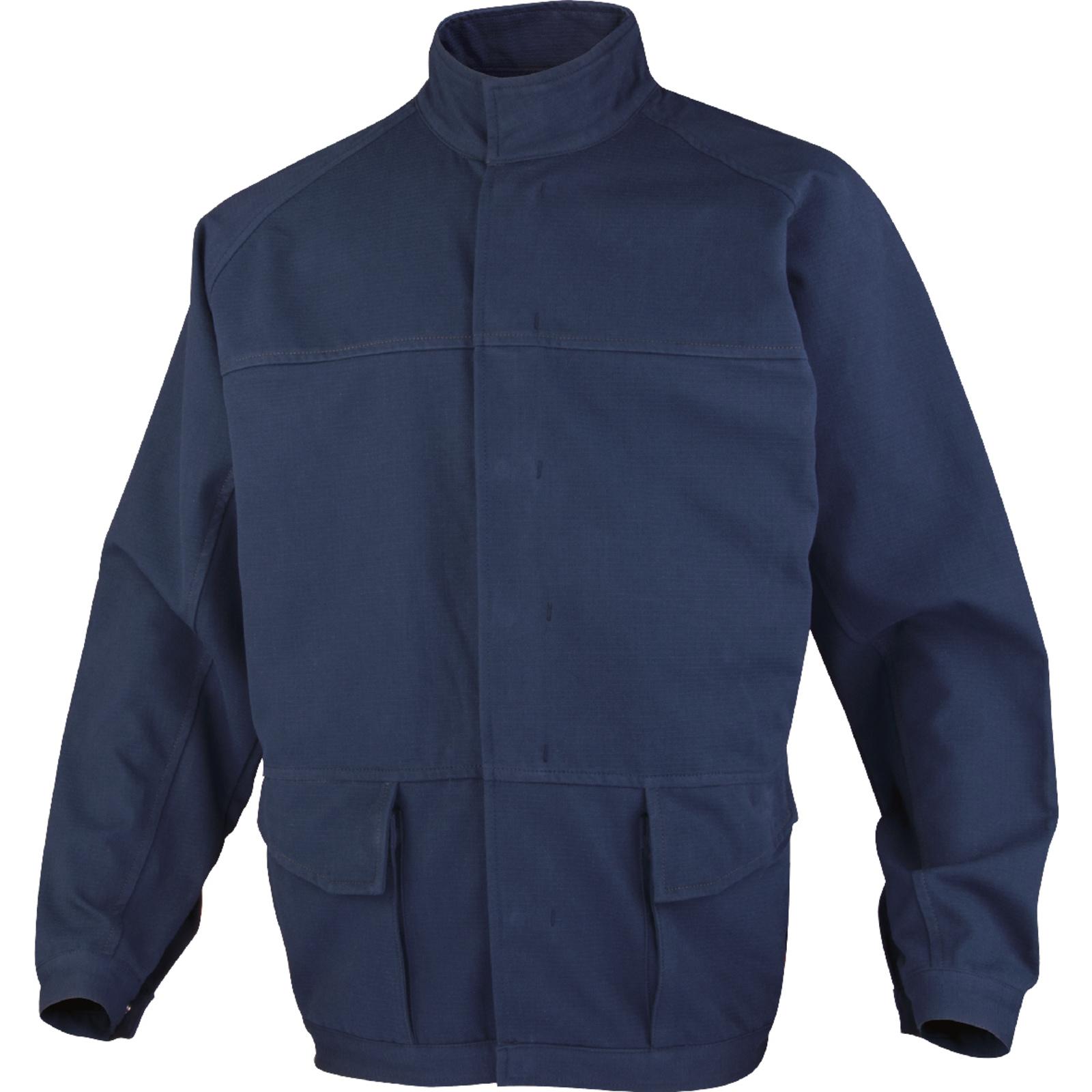The product complies with the European Directive 89/686, notably regarding ergonomics, innocuousness, comfort and with standards :
MODACRYLIC / COTTON TONGA3 WORKING JACKET
Jacket, concealed stud Mandarin collar. Concealed Stud front fastening. Raglan sleeve with concealed adjustable cuffs. Side elastication and 2 side pockets with flap over.
60% Modacrylic 37% cotton 3% antistatic fibre 250 g/m².

50 washes at 75°C
TONV3 - TONP3 - TONC3
| Reference |
pcb |
Colour |
Size |
| TONV3BMPT |
5 |
Navy blue |
S |
| TONV3BMTM |
5 |
Navy blue |
M |
| TONV3BMGT |
5 |
Navy blue |
L |
| TONV3BMXG |
5 |
Navy blue |
XL |
| TONV3BMXX |
5 |
Navy blue |
XXL |
| TONV3BM3X |
5 |
Navy blue |
3XL |
| TONV3BM4X |
5 |
Navy blue |
4XL |
EN340:2003 General requirements Reference standard, not for use alone, but only in association with another standard containing the protection performance requirements.
This standard specifies general performance requirements for ergonomics, innocuousness, size designation, durability, ageing, compatibility and marking of protective clothing and the information to be supplied by the manufacturer with the protective clothing.
EN13034:2005+A1:2009 Performance requirements for chemical protective clothing offering limited protective performance against liquid chemicals (Type 6 equipment) - 6 Limited protection against liquid chemicals Type 6
- Limited protection against liquid chemicals + biological protection Type6B
- Limited protection against liquid chemicals + biological protection type (PB) 6 - partial body protection
EN ISO 11612:2008 Protective clothing - clothing to protect against heat and flame. - A1 Limited flame spread (from A1 to A2, X=not tested)
- B1 Convective heat (from B1 to B3, X=not tested)
- C1 Radiant heat (from C1 to C4, X=not tested )
- X Projection of molten aluminium (marking D1 to D3, X= not tested)
- E1 Projection of molten cast iron (from E1 to E3, X=not tested)
- F1 Contact heat (from F1 to F3, X=not tested)
Protection against heat and flame.
These standards specify the performance requirements of materials and protective clothing against heat and flames. They apply to clothing made of soft material, designed to protect the human body except the hands against heat and/ or flame.
Tested are:
EN1149-5:2008 Electrostatic properties - Part 5: Material performance and design requirements - Surface resistivity inferior or equal to 2.5x10⁹ Ohms on one surface at least following EN1149-1
- t50<4s / S>0.2 t50 <4s or S> 0.2 by method 2 ( charging by induction) of EN1149-3
This European Standard specifies requirements for materials and the design of protective electrostatic dissipation clothing used in conjunction with a grounded system in order to prevent incendiary discharges.
WARNING: These requirements may be insufficient in oxygen enriched flammable environments. This standard is not applicable for protection against mains voltages. The control of undesirable static electricity on the person is often necessary.
The electrostatic potential may, indeed, have serious consequences on the charged individual, because it can be high enough to cause dangerous sparks.
After a risk assessment, the wearing of protective electrical dissipation clothing may be necessary. The use of clothing certified according to EN1149-5 is then adapted.
The ATEX Directive 1999/92/EC, in its Annex II-A-2.3, requests that workers be equipped with work clothes made of materials that do not produce electrostatic discharges that can ignite explosive environments.
The electrostatic potential can also affect equipment sensitive to electric discharge. And antistatic clothing are often used on electronic manufacturing sites, assembling semiconductors for example. Finally, they are used on sites with controlled atmospheres such as automotive paint workshops, to avoid the emission of particles that may be deposited on the body paint.
The antistatic charge dissipation can be provided by a process limiting the build up of charge, or by adding carbon or metal wires. People wearing protective electrostatic charge dissipation clothing must always be grounded with a resistance of less than 10⁸Ω, for example, by wearing appropriate footwear such as the safety shoes stated in EN ISO 20345, or by other suitable means.



